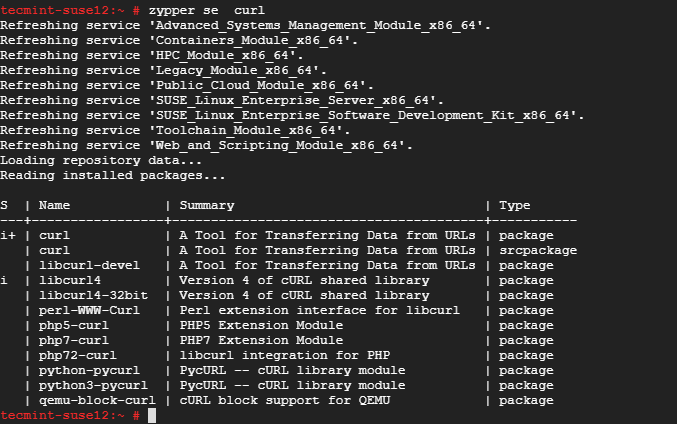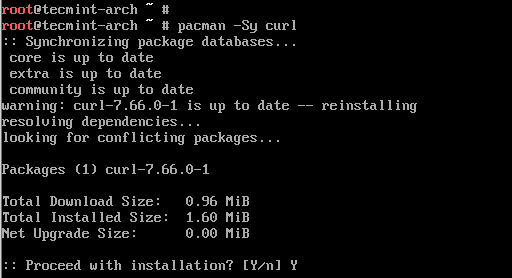In this article, you will learn how to install the curl command-line tool for transferring data to and from a server using various types of requests. It’s an alternative to downloading files other than using wget command.
The curl command downloads files that are served with FTP, HTTP, SCP, IMAP, and other various supported protocols. It’s an amalgamation of the words World Wide Web and it is used in Unix/Linux systems to download files and packages on the Linux terminal.
On this page
Install curl on Ubuntu/Debian
In modern systems, curl comes pre-installed. However, If you are running an instance of Ubuntu or Debian, issue the command.
# apt-get install curl

To verify the curl installation, run.
# dpkg -l | grep curl

Install curl on RHEL / CentOS / Fedora
To install curl on RHEL, CentOS and Fedora distros, log in via SSH as root and run the command.
# yum install curl

To confirm the installation of curl, run.
# rpm -qa | grep curl

Install curl on OpenSUSE
On OpenSUSE, install curl by running.
# zypper install curl

To confirm the installation of curl run.
# zypper se curl

Install curl on ArchLinux
To install Curl on ArchLinux, run.
# pacman -Sy curl

And finally, to confirm its installation run the command.
# pacman -Qi curl

To know more about curl command usage and examples, I suggest you read our following article that explains how you can use curl command-line utility for downloading files from the web.
And with that, we have come to the end of this guide. In this tutorial, you learned how to install curl in different Linux distributions.






